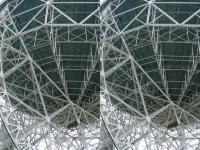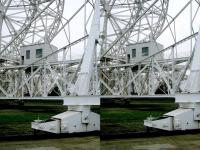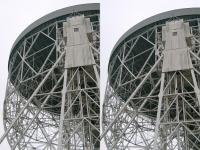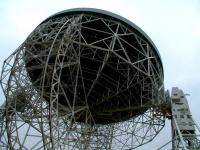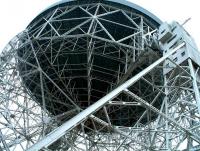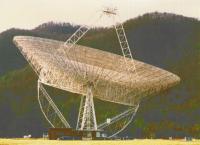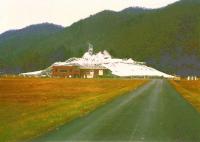Printable Version of Topic
Click here to view this topic in its original format
Unmanned Spaceflight.com _ Voyager and Pioneer _ Far Out
Posted by: Marcel Jul 18 2005, 01:46 PM
Very interesting article (pdf).
http://astronauticsnow.com/mg_pubs/2005_Gruntman_et_al_p_29-34_IAA_Aosta.pdf
Also available as a "here" link on the 4th topic on
http://www.centauri-dreams.org/
Posted by: Bob Shaw Jul 18 2005, 02:17 PM
Marcel:
Interesting - and the last paragraph speaks of a new DSN study of an 11m antenna 'Farm' concept for the downlink...
Bob Shaw
Posted by: Marcel Jul 18 2005, 02:25 PM
Yeah, but that's the part i did not understand quite well i'm afraid. 11 m farm ? Do they mean a "farm" with 11 meter dishes in an array (like a Y-configuration) ? There are a lot of arrays MUCH bigger than that already.......aren't there ?
Marcel.
Posted by: djellison Jul 18 2005, 02:34 PM
Lots of small dishes adding up to the same size as one large dish ends up as a cheaper option I presume?
Doug
Posted by: edstrick Jul 19 2005, 09:41 AM
One of the "Purple Pigeons of Planetology" dream missions proposed post Viking, post-Voyager was "TAU"... Thousand Astronomical Units"... Hubble scale telescope and other instruments lobbed out of the solar system, maybe with a solar-electric propulsion system followed by Jupiter gravity assist <don't recall> on a 30 or 50 year mission.
Imagine the astrometry they could do in the galaxy with a 500 AU parallax baseline and hubble sized optics.
Posted by: AndyG Jul 19 2005, 11:58 AM
With a baseline that much bigger than Hipparcos' 2AU, the same resolving power, and a limiting magnitude six million times dimmer, we could be making 3d maps (including all M3V and brighter stars) across the galaxy to an accuracy of a couple of light hours...
...be just about able to trigonometrically measure distances to stars as bright as Canopus in the Andromeda galaxy...
Wow!
Andy G
Posted by: Bob Shaw Jul 19 2005, 03:32 PM
Doug
Doug:
Basically, yes - albeit with certain caveats. You have much more data-handling, and perhaps even have to have cleverer engineering than a 'big ear' (I don't know about Arecibo, but Jodrell Bank's big dish has more in common with a railway bridge that moves (it's *HEAVY*) than a refined bit of hyper-engineered kit!). Nothing beats surface area, but the practicalities are such that a load off almost off-the-shelf devices with moderate engineering requirements can compete very well. But, you *don't* get something for nothing, though in an era of low-cost computation/GPS/laser surveying/high speed data links (to name but a few of the required technologies) you *can* get something very economically.
To put this in perspective, there's a company in Liverpool (I forget their name, an offshoot of one of the Universities, possibly John Moores) which is making a determined stab at 'production-line' research class optical telescopes, and if their financial model holds up we could see a lot of 'moderate' aperture optical work. Think of the value of a hundred 48" scopes with active optics compared to one or two biggies...
And, finally, remember that radio-telescopes actually *are* in mass-production and common use - there must be one on every other house, where I stay...
Bob Shaw
Posted by: tty Jul 19 2005, 05:06 PM
And, finally, remember that radio-telescopes actually *are* in mass-production and common use - there must be one on every other house, where I stay...
Bob Shaw
Not to mention radar antennas. Radio astronomy very largely begun with surplus german "Würzburg Riese" antennas back in the late forties. Allied (especially english) radar antennas weren't built to tight enough tolerances to be useful, but german ones were....
tty
Posted by: djellison Jul 19 2005, 06:06 PM
I think that telescope company is in Birkenhead - didnt they make the mirrors for the Faulkes scopes? I remember going "Ohh - Birkenhead" because that's where Helen and I both herald from in our youth ![]()
Posted by: Bob Shaw Jul 20 2005, 01:01 PM
On the big radio telescope 'Railway Bridge' heavy engineering front, here are some pictures of Jodrell Bank which illustrate the scale of things. Some are in 3-D.
Posted by: Bob Shaw Jul 20 2005, 11:01 PM
There *is* a reason for strong structures - as shown by the before and after shots of the 300' Green Bank dish (pics by Richard Porcas).
http://www.gb.nrao.edu/fgdocs/300ft/300foot.html
Posted by: ilbasso Jul 21 2005, 01:10 AM
Man, I HATE it when that happens!
Posted by: lyford Jul 21 2005, 01:42 AM
I think they did it on purpose so they could get this nice new shiny one...
http://wwwlocal.gb.nrao.edu/GBT/GBT.shtml
Hope no one was hurt....
Posted by: Bob Shaw Jul 21 2005, 08:52 AM
http://wwwlocal.gb.nrao.edu/GBT/GBT.shtml
Hope no one was hurt....
Lyford:
You reckon it was an insurance job?
Hmmm... ...so that's the *real* conspiracy behind Mars Observer, Mars-96, MPL, MCO etc!
Bob Shaw
Posted by: lyford Jul 21 2005, 09:01 AM
![]()
Posted by: ljk4-1 Jan 10 2006, 03:33 AM
Paper: astro-ph/0601117
Date: Fri, 6 Jan 2006 00:20:29 GMT (57kb)
Title: The Local Interstellar Medium
Authors: Seth Redfield (University of Texas at Austin)
Comments: 15 pages, 2 figures; to appear in ASP conference proceedings of
"Frank N. Bash Symposium 2005: New Horizons in Astronomy"
\\
The Local Interstellar Medium (LISM) is a unique environment that presents
an opportunity to study general interstellar phenomena in great detail and in
three dimensions. In particular, high resolution optical and ultraviolet
spectroscopy have proven to be powerful tools for addressing fundamental
questions concerning the physical conditions and three-dimensional (3D)
morphology of this local material. After reviewing our current understanding
of the structure of gas in the solar neighborhood, I will discuss the influence
that the LISM can have on stellar and planetary systems, including LISM dust
deposition onto planetary atmospheres and the modulation of galactic cosmic
rays through the astrosphere - the balancing interface between the outward
pressure of the magnetized stellar wind and the inward pressure of the
surrounding interstellar medium. On Earth, galactic cosmic rays may play a
role as contributors to ozone layer chemistry, planetary electrical discharge
frequency, biological mutation rates, and climate. Since the LISM shares the
same volume as practically all known extrasolar planets, the prototypical
debris disks systems, and nearby low-mass star-formation sites, it will be
important to understand the structures of the LISM and how they may
influence planetary atmospheres.
\\ ( http://arXiv.org/abs/astro-ph/0601117 , 57kb)
Powered by Invision Power Board (http://www.invisionboard.com)
© Invision Power Services (http://www.invisionpower.com)

